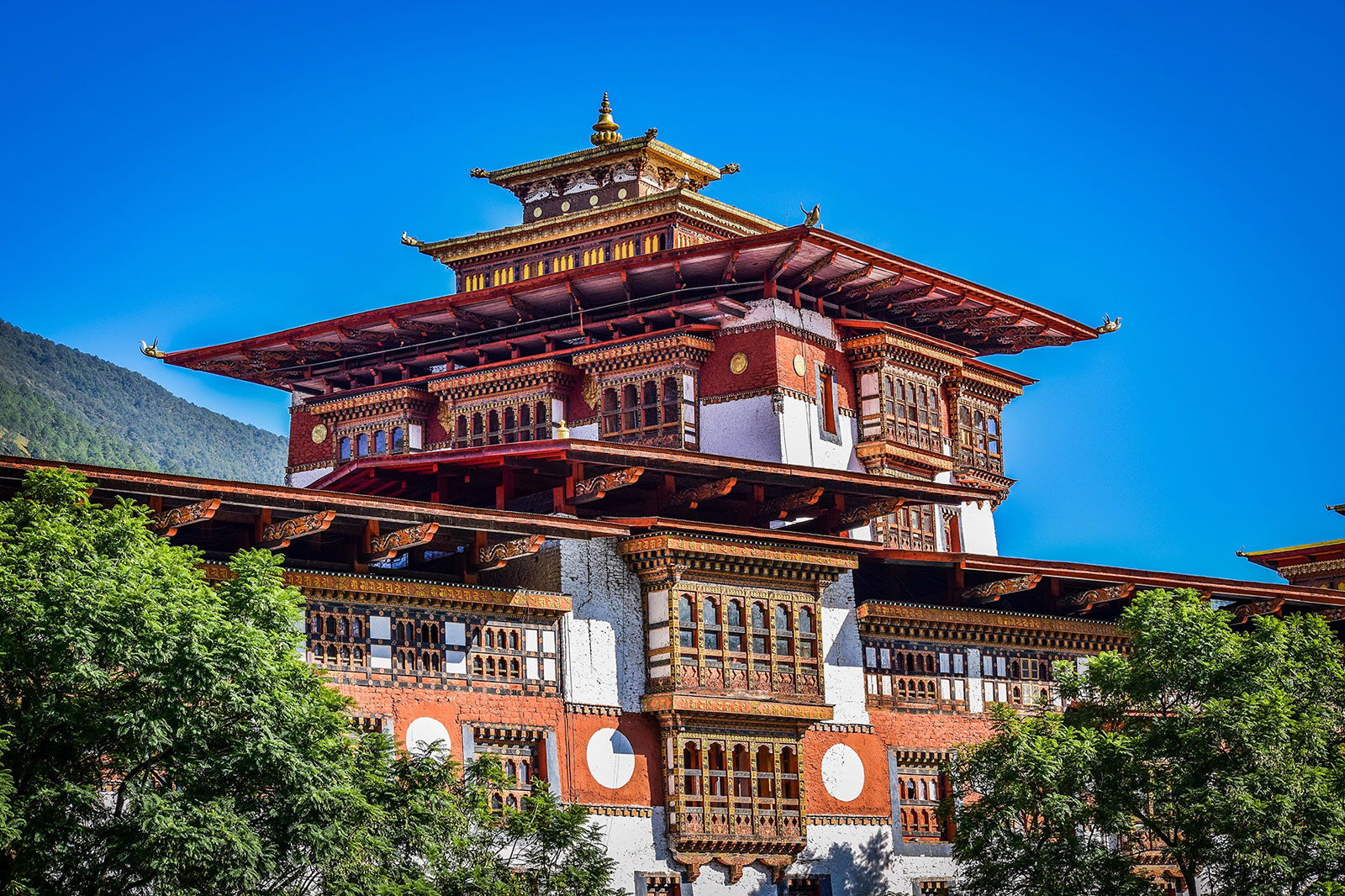Religion of Bhutan.Bhutanese people worshiped all forms of nature till the visit of Guru Rinpoche in the 8th century. The religion practiced was animism referred to as Bon.
People in olden days believed that the invisible forces owned different elements of nature. It was believed that different deities resided on mountain peaks, lakes and land. As part of worship to the nature and deities, communities organized festivals and conducted sacrifices.
Following three visits to Bhutan by Guru Rinpoche in the 8th century Buddhism began to take firm roots in Bhutan. His first visit was to treat the ailing Sendha Gyab, the king of Bumthang in 746 A.D and led to the propagation of the Nyingmapa (the ancient or the older) school of Buddhism.
Guru Rinpoche’s second visit was from Tibet to Singye Dzong in Lhuntse. Guru Rinpoche in his wrathful form of Dorji Drolo flew from Singye Dzong to Taktsang, on the back of a tigress, who was actually his consort, Tashi Khyeuden. He meditated in Taktsang for three months and subdued the demon. Today, Taktsang is one of the sacred places in Bhutan. The third visit by Guru Rinpoche was to put in exile Khikharathoed, the king with dog mouth and goat skull who was anti-Buddhist.
Another landmark in the history of Bhutan is the arrival of Phajo Drugom Zhigpo to Bhutan in 1222. He introduced the Drukpa Kagyu school of Buddhism. The tradition of Drukpa Kagyu was spread especially in western Bhutan by his sons.
Zhabdrung Ngawang Namgyal, one of the greatest historical figures in Bhutan came to Bhutan in 1616 after a conflict with the King of Tsang in Tibet. He strengthened the Drukpa Kagyu school of Buddhism. Although, Drukpa Kagyu is the state religion of Bhutan people also follow Nyingmapa school of Buddhism and Hinduism.
Bhutan is a country where Buddhism is still vibrant and alive. The Dzongs, monasteries, stupas, prayer flags, and prayer wheels punctuate the Bhutanese landscape. The chime of ritual bells, sound of gongs, people circumambulating temples and stupas, fluttering prayer flags, red robed monks conducting rituals, among many others are common sights to reveal that Buddhism is firmly embedded in the lives of Bhutanese.









